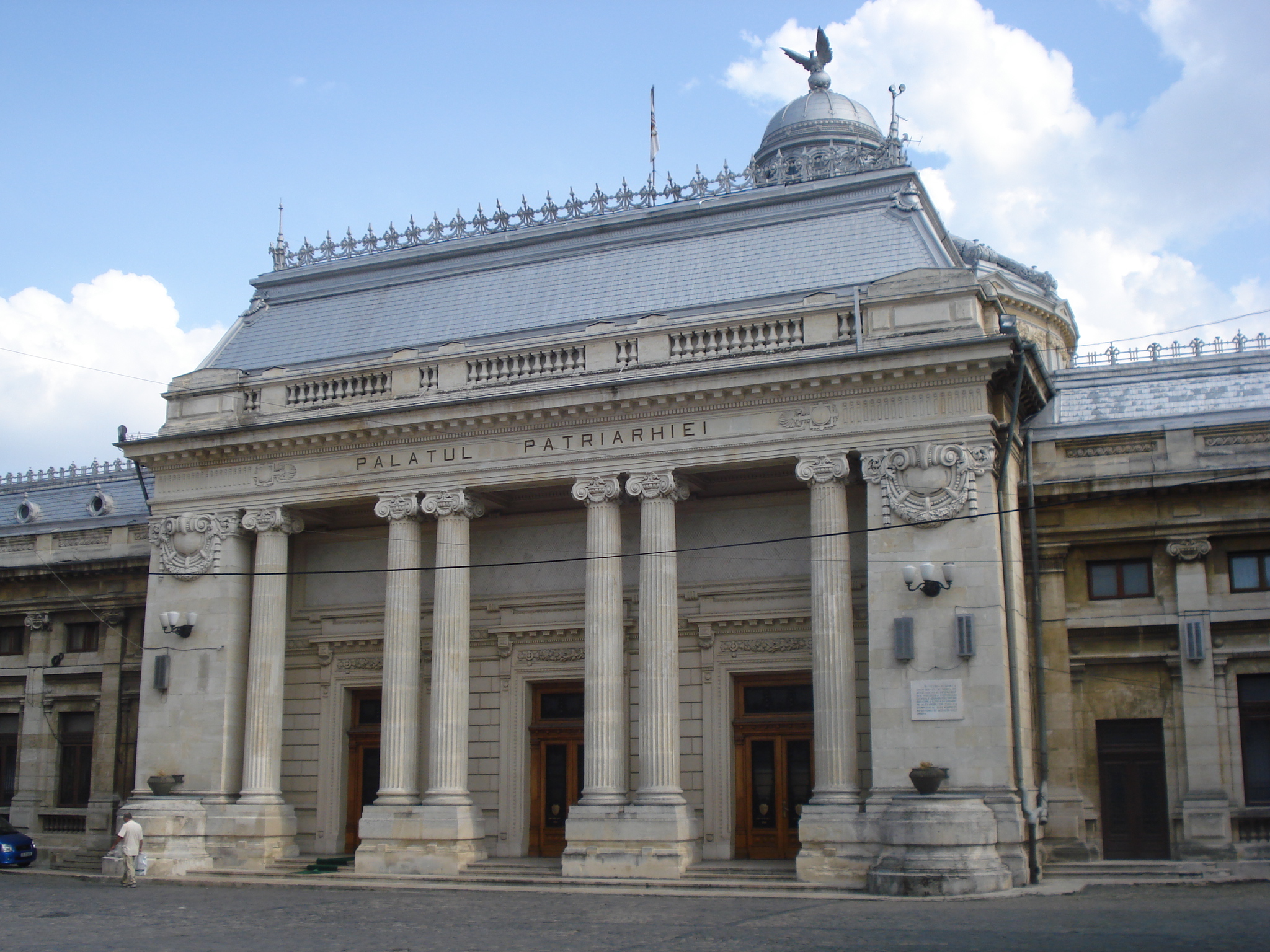- Palace of the Patriarchate
Infobox Historic building
name = Palace of the Patriarchate
"Palatul Patriarhiei"
caption=
map_type=
latitude=
longitude=
location_town =Bucharest
location_country = ROU
architect = Dimitrie Maimarolu
client=
engineer=
construction_start_date =
completion_date = 1907
date_demolished =
cost=
structural_system=
style=
size=The Palace of the Chamber of Deputies ( _ro. Palatul Camerei Deputaţilor) (now the Palace of the Patriarchate ("Palatul Patriarhiei"); also known as the Palace of the Great National Assembly ("Palatul Marii Adunări Naţionale") during the Communist regime) is a building in
Bucharest ,Romania located on the plateau ofDealul Mitropoliei . The building served as the seat of successive Romanian legislatures: of the Assembly of Deputies during theKingdom of Romania , then of the Communist-eraGreat National Assembly , and after theRomanian Revolution of 1989 , of the Chamber of Deputies. Parliamentarians vacated the building in 1997, when it passed to the Patriarchate of theRomanian Orthodox Church .History
The earliest information about the hill on which the Palace would be built dates to about 1650. [Greceanu, p. 172.] At that time, Dealul Mitropoliei, later Dealul Patriarhiei, was covered in grapevines owned by the country's
voivode s, with others belonging to the Metropolitanate's monks. The idea of placing the seat of legislative power in the middle of a religious complex was not mere coincidence, but has its roots in customs of the period. According to these customs, the Metropolitan was "ex officio" president of theboyar s, the only citizens with the right to vote, when assembled in formal session. Moreover, it was necessary to have the seat of legislative power on the hill because by tradition, the Metropolitan could not leave his residence. Consequently, the practice of organising legislative meetings at the Metropolitanate became entrenched, so that part of the monks' cells were transformed into a building that could accommodate official legislative sessions.In 1881 the old building, which had housed the princely divan, was repaired and refurbished. To this structure, which originated in the modified monastic cells, was added an amphitheatre similar to that which would soon be found inBerlin 'sReichstag building . The amphitheatre was large, well-decorated, spacious, and had two sets of private viewing boxes and a gallery. The deputies attended meetings in a session hall, seated in a semicircle; in front of them was a speaker's platform, to the right of which was the ministers' bench. [Greceanu, p. 172.]The building was open for public visiting only at hours when the legislature was not meeting, following an agreement won by a bureaucrat working there. Romanian citizens could attend legislative sessions only if a deputy signed their entrance ticket; foreign citizens needed a signature from their country's embassy.
In 1907, the former princely divan building was replaced with the present-day palace;
Dimitrie Maimarolu was the architect.Description
The façade, done in a neo-classical style, is 80 m long. The imposing ground floor is dominated by the centre of the façade, the entrance area, detached and having a
peristyle featuring six Ionic columns, the four in the centre grouped as pairs. The cupola, similar to that of theRomanian Athenaeum and located above the assembly hall, is raised, fitted with windows, and topped by an eagle; it forms the palace's central axis. The main façade has two side wings, architecturally subordinate to the entrance.The side façade, on the northeast, is symmetrical and its ordered style confers upon it an imposing status. It is decorated with
pilaster s on two levels, these being decorated and dominant on the sides.When seen from United Nations Street, the palace’s four levels can be observed. The first level has the appearance of a massive base and is made of stone; the second is powerfully carved; and above this is the level through which one enters the main façade, coming from the cathedral.
Notes
References
* Greceanu, O. N. "Bucureştii". Bucharest: Tipografia Cartea medicală, 1929.
* Ionescu, Grigore. "Bucureşti. Ghid istoric şi artistic". Bucharest: Fundaţia pentru literatură şi artă, Regele Carol II, 1938.
* Florian Georgescu, Paul Cernovodeanu, Alexandru Cebuc. "Monumente din Bucureşti". Bucharest: Meridiane, 1966.
* Colfescu, Silvia. "Bucureşti. Ghid turistic, istoric, artistic." Bucharest: Vremea, 2007.External links
* [http://www.gloriagrup.ro/PatriarhiaPhp/palat/palat.php Description from an official site of the Romanian Orthodox Church]
Wikimedia Foundation. 2010.
